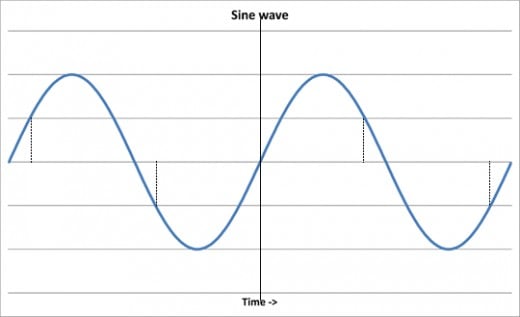- HubPages»
- Home and Garden»
- Home Improvement»
- Lamps & Interior Lighting Improvements
How to Choose the Right Dimmer Switch
When were dimmer switches created?
Well, in the olden days of the 19th century (that’s 1800s for the layman), the first dimmers used something called a variable resistor, usually a rheostat or potentiometer. A resistor, as we well know, is any material that doesn’t conduct material well. A higher resistance means a lower amount of electricity getting through. A variable resistor was a loop of resisting material, and two contact arms: one stationary, the other moving. The amount of light depended on how much electricity was passing through the resistor. A person would turn a knob, like modern dimmers, that turned a contact arm touching the loop. The position of the knob determined how much resistance the electricity met.
The problem with these old dimmer systems was that, if you wanted to dim the lights, you were still using the same amount of energy, which was lost as heat. This was not only expensive for homeowners, but inefficient and extremely dangerous.
The main drawback with modern dimmers using the TRIAC system is that they feature a poor power profile, lagging over time. There is a high harmonic current content which has proven to be problematic in most electrical components. Harmonic current has to do with the the waveform of the voltage. So, the common frequency for electricity is about 50-60 hertz. Whenever you attach an electrical load, it creates a frequency in the same range, but perhaps not in sync. T
Think of a boat on the ocean rocking to and fro and up and down; that boat is the voltage. Now imagine someone let a bowling ball loose on the deck; this ball is the electrical load. Now, whenever the boat moves to the right, the ball starts rolling to the right. But as the ball is reaching starboard side (the right), the boat shifts to port, or the left. Pretty soon, the ball and the boat are moving out of sync, creating chaos.
This is exactly what is happening with the current and leads to something called harmonic distortion. Harmonic distortion can lead to the destruction of electrical loads or components.
TRIAC dimmers are also a bit loud, creating an annoying humming sound that you just can't quite tune out. There's also the matter of the headache-inducing flickering that is so prevalent in fluorescent lights. It isn't as obvious in TRIAC dimmers but it is present.
The Modern Dimmer
Modern dimmer switches are quite an improvement over their older, hotter, counterparts. Today’s dimmers interrupt the circuit by rapidly shutting it. This reduces the amount of electricity flowing through to the light, which means a dimmer result.
Imagine, for a second, that your hand is a wave. Stick it out flat in front of you, palm facing down. Now, let it flow up and down smoothly, like a dolphin swimming through the ocean. See how it dips down before rising again? That’s an undulating wave and that’s how light moves. Light moves in a sine wave, moving up then down in a cycle; light goes through 60 cycles a second. That’s fast.
Modern dimmers trim these waves, cutting off sections by interrupting the circuit whenever the light wave changes directions (up to down, down to up). These waves get a haircut, so to speak, about twice per cycle, or 120 times a second. The dimmer reconnects the circuit when the light wave reaches a certain voltage. How fast the circuit is turned on depends on the position of the dimmer switch. A brighter light means a faster circuit reconnection.
But how does a dimmer switch a circuit on or off? Do fairies cut the circuit, and then magically reconnect it? Is the light taking a break every few milliseconds before getting back to work? This magical component is known as the triode alternating current switch or triac. This triac is a semiconductor with two terminals with a voltage difference between them. This difference changes depending on the positing of the current. Depending on the position, the top terminal is positively charged while the bottom is filled with negativity, or vice versa.
There is always a certain amount of voltage acting on the current and that amount is considered “normal”. This normal voltage causes the triac to act as open switch in a circuit. Basically, the the triac is the gap filled with non-conducting material, blocking electrons from traveling. Imagine the triac like an air conditioner with a gate. When there is normal voltage, the gate is closed and very little air, if any, is getting past the gate.
However, if you increase the voltage, these gaps filled with non-conducting material lose their effectiveness and electrons move across to complete the circuit. Now, the gate on the AC is open and air is getting through nicely. But this gate needs time to open. How fast this gate opens depends on how much resistance there is on the current. Remember the old type of dimmer? Same principle, but modern technologies mean there is less heat and energy being expended.
Basically, a dimmer controls how much of a sine wave, or light wave, is getting through to the bulb. This technology is called phase cutting technology.
Types of Dimmers
There a few domestic dimmer switches available for the homeowner. The type you choose will depend on your energy requirements and lamp bulb type. It is important that you choose the right type or you will run the risk of reducing the life of your lamp. We will touch 5 types of dimmers: resistive (leading vs. trailing), inductive, fluorescent fittings, and LEDs.
Leading vs. Trailing Edge
Mainstream dimmers use phase cutting technology that cuts off sections of voltage. The root mean square (RMS) of the voltage refers to the total spread. It is the RMS that phase cutting technology controls. Increasing or decreasing the RMS voltage brightens or darkens a bulb, respectively.
The part of the sine wave that gets cut off depends on the version of dimmer switch. Leading edge dimmers cut off the beginning of each half of the wave. Trailing edge dimmers cut the ends.
Resistive Dimmers
This type of dimmer is designed to control lamps with filaments. Filaments emit heat and visible light and are a major component of most light bulbs. Resistive dimmers are rated by the maximum wattage recommended by the manufacturer. Using this type of dimmer as an inductive one or by overloading it will cause irreparable damage to the unit.
Inductive Dimmers
This type of dimmer is designed for light sources using wire wound components, usually transformers. Inductive dimmers come de-rated to allow for the rush of the in-current. Because inductive dimmers are used for lights sources with low-lighting, these dimmers must raise the current and that requires specific properties.
Fluorescent Dimmers
Just as fluorescent light tubes need a ballast for the lamp to operate, the dimmer requires an analogue 1-10 volt ballast. This gives you smoother dimming control and reduces radio frequency interference (RFI).
However, combining a dimming system with ballasted lamps is most often used for linear fluorescent set-ups. Fluorescent lamps don’t use the same type of dimmer switch as other types of bulbs because the cathodes must maintain a minimum temperature in order to form and maintain the arc in the tube. A dimmer switch reduces current and, so, the temperature. Manufacturers have created complete dimming systems for electronic ballasts.









